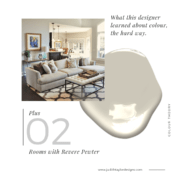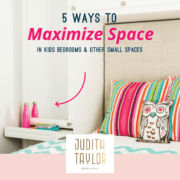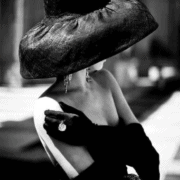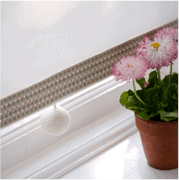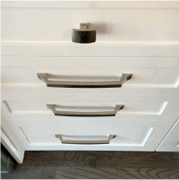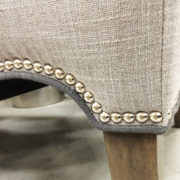One of the trickiest predicaments for a design newbie is figuring out how high (or low) to hang your lighting fixtures. Chandeliers, pendants, etc. can mystify even the veterans because they are all so different.
How High Do You Hang a Lighting Fixture?
Though there is a bit more of an art than science to it, here are a few factors to consider:
Hang over an ‘Anchor’
Chandeliers and pendants can make a striking impact when hung correctly. If you’re looking to hang a chandelier over your dining table, master bed, kitchen island or bathtub, treat those furniture pieces and fixtures as your anchor. The space will look more visually appealing if the lighting is centered to these instead of centered to the entire room.
Play off of Architectural Accents
Does your home have beautiful crown moulding or an opening you can play off of? Can you align your lighting to match the height of door openings or windows? Pay attention to how the builders have set up your home and hang your lighting accordingly.
Consider your Sight Lines
Put yourself in your space as if you are seeing it for the very first time. Where does your eye naturally wander to and from? How can you hang your lighting in a way to draw a visitor into your space and attract attention to the features?
Size it Right
In a designer’s eyes, there is almost nothing worse than seeing a dinky light fixture being swallowed by a huge space. In recent years, design trends have swung to the other side of the spectrum with intentionally oversized lighting. It takes a trained eye to get really good with proportion but for now let your eye be your guide as there are no strict rules regarding size.

Kitchen Lighting Height:
When hanging light fixtures over a kitchen island, the bottom of the light should be within approx 30-34 inches above the countertop.
If your ceiling height is higher than 8-9 feet, you can add a few inches (approx 2-3 inches in height from the countertop) for each extra foot of ceiling height). Be sure to leave a minimum of 6-8 inches from the side of the island to the edge of the light, so they don’t look like they are hanging over the edge.
Also, ensure you have at least 18-24 inches between each light fixture if you’re hanging more than one, so they don’t look too crowded. You will have to eyeball it a bit based on the scale and visual weight of the light fixtures but this is a good starting point. Don’t be afraid to use your eye and designer instincts to get the perfect placement for your installation.

Dining Room Lighting Height:
Over a dining room table, it is best to have the bottom of the light approximately 30-36 inches above the top of the table. In a room with a higher ceiling you can raise the lighting a bit, but you still want your light fixture to be grouped with the table visually, not hovering above. So, if your ceiling is higher than 8-9 feet you can add a little bit (approximately 3-4 inches in height from the countertop for each extra foot of ceiling height).
In either case, be sure to leave a minimum of 6-8 inches from the side of the table to the edge of the light so they don’t look like they are hanging over the edge, and so people can’t bump their heads.
Here are some rough numbers to go by:
The Right Height to Hang a Dining Room Fixture / Chandelier
- 8′ ceiling 32 -36″ between the top of your table and the bottom of your fixture
- 9′ ceiling 36″-40″ between the top of your table and the bottom of your fixture
- 10′ ceiling 40″-44″ between the top of your table and the bottom of your fixture

The Right Height to Hang Wall Sconces
Wall sconces are typically installed at a height of 66 to 72 inches (5.5 feet to 6 feet) above floor level, but there is some discretion depending on where they are used and what the overall ceiling height is (rooms with vaulted ceilings can take a higher placement). In narrow hallways or areas where there is high traffic, I like to place them a bit higher to make sure they aren’t likely to pose a hazard for taller people.

Hanging a Light in an Entryway or Foyer
A good rule of thumb is you should have 7′ of clearance (minimum) from your floor to the bottom of your light if you have a 1 level entryway. This will allow for most non-basketball players to avoid bumping their heads.

PRODUCT HIGHLIGHT:
All this talk about lighting has us thinking about our favorite fixtures and how they can transform interior spaces. Below are some of our tried and true chandeliers, pendants and sconces, plus a few that we are excited to use in 2019!

1, 2, 3, 4, 5, 6
Looking for a little more help selecting lighting? The Judith Taylor Design Team would be happy to help you with your projects. Please contact us via our form here.
Need more Lighting ideas? Follow us on Pinterest!











